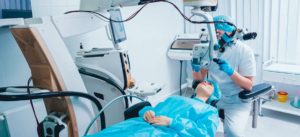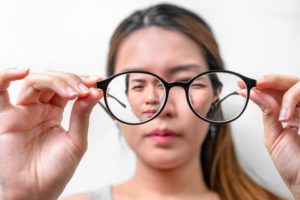What is LASIK Eye Surgery?

LASIK eye surgery is a minimally invasive procedure to treat vision problems. It takes between five and ten minutes to complete and involves making a flap in the cornea. However, there are risks associated with this surgery. The process can result in blurred or worsened vision.
LASIK eye surgery is a minimally invasive medical procedure
LASIK eye surgery is a common procedure used to correct vision problems. It is a minimally invasive procedure that usually takes less than an hour. During this procedure, the patient lies in a reclining chair while the surgeon positions a femtosecond laser and a microkeratome blade accurately over the eye. The doctor will use a tiny blade to cut a thin flap of corneal tissue, which will then be reshaped using the excimer laser.
LASIK eye surgery is safe for most patients, and there is no need to stay in the hospital. Most people return home within two days after surgery. Patients may feel some slight discomfort and will be given eye drops to take regularly. They should avoid strenuous activities for a week. They will also need to return to the doctor for follow-up appointments.
It takes about 5-10 minutes
LASIK eye surgery is a quick and simple procedure, and the recovery period is relatively quick, too. You can typically return to work the day after surgery, and your vision should be clear within a few days. You may feel some discomfort during the post-operative period, but this is nothing to be concerned about. You will be instructed not to rub your eyes. During your post-operative visit, your doctor will check your eyes to ensure they have recovered properly.
The LASIK procedure typically lasts about five to ten minutes. A customized laser will analyze your eye’s unique characteristics and then create a map of your cornea using light waves. Once the laser has completed the procedure, the surgeon will use a computer to adjust the laser. After adjusting the laser, the surgeon will remove some tissue from your cornea. The surgeon will then place a flap back into place. There are no stitches needed after this surgery, and the flap will heal naturally without stitches. Following the procedure, you can expect some redness and burning in your eye and some blurred vision. You may be required to wear eye drops to alleviate any discomfort and an eye shield will protect your eye during the healing period.
It involves creating a corneal flap
LASIK eye surgery is a two-step procedure that involves creating a thin, circular flap in the cornea. Depending on the patient’s needs, the first step involves using a blade or a laser to cut a flap on the cornea. The flap is then lifted to reveal the corneal tissue underneath. In the second step, an excimer laser is used to reshape the cornea.
The flap is created using a hinge, with the hinge being placed closest to the nose. The nasal position has long been the standard, but recent innovations have improved the LASIK flap’s placement. The surgeon may use a technique called “down-up” to help the flap remain in place longer. Gravity and the blinking process also play a role in keeping the flap in place.
It can make your vision worse
There are several risks of LASIK eye surgery, including the potential for vision problems. The procedure is a permanent change to the cornea, so your vision may not improve immediately after surgery. It may take several months before your vision will improve completely. In addition, your vision may not be as sharp as it was before surgery, especially in dim light. Even though the postoperative testing is done under optimal conditions, you may still have to use glasses or contact lenses for several weeks after the surgery.
Although most people age well, LASIK eye surgery may not be right for everyone. Some people with presbyopia or farsightedness are not good candidates for this procedure. These people will probably need to have another surgery to improve their vision.
It requires steroidal and antibiotic eye drops
After LASIK eye surgery, steroidal and antibiotic eye drops should be used to minimize the risk of inflammation and infection. They are generally prescribed for 7 to 10 days. You will need to apply the drops several times daily. Your surgeon will tell you how many drops to use each day and for how long.
These medications can cause a number of side effects. Among these is a need for frequent follow-up visits. In some cases, the steroidal eye drops can cause side effects. Patients may experience some redness, itching, or a gritty feeling in the eye. However, this discomfort is generally not severe.
It may make you need reading glasses sooner than if you had not had LASIK
Although the results of LASIK eye surgery are permanent, there are certain risks. One of these risks is presbyopia, a condition that affects people as they age. This condition reduces the ability to focus on objects close to the retina. Even after LASIK eye surgery, patients may still need to wear reading glasses.
LASIK eye surgery does not prevent the development of cataracts and other eye diseases. As you age, you may require reading glasses sooner than if you hadn’t had it. You may also experience the development of presbyopia, a condition that occurs due to the loss of elasticity in the lens of the eye.


